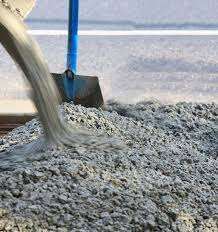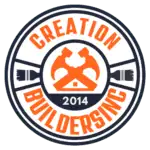Concrete vs Cement : Differences and Similarities
Cement vs. Concrete: Key Distinctions Uncovered
People often confuse cement and concrete, using the terms interchangeably. However, they are distinct materials with unique characteristics, purposes, and applications. While cement is an essential ingredient in concrete, their roles and properties are quite different. This comprehensive guide unpacks their differences, composition, production, and applications, offering clarity on the subject.
What Is Cement?
Cement is a fine, powdery substance that serves as a binding agent in construction. It hardens and sets when mixed with water, making it a crucial component in creating concrete and mortar. Cement has various other applications in construction and beyond.
Cement’s Composition
Cement primarily consists of natural materials like limestone, clay, and other minerals. These raw materials undergo a high-temperature process to form clinker, which is then finely ground to produce cement. The most widely used variety is Portland cement, and its main components include:
Calcium oxide (CaO): Typically derived from limestone or chalk.
Silicon dioxide (SiO2): Found in clay, sand, or shale.
Aluminum oxide (Al2O3) and iron oxide (Fe2O3): Provide additional properties and are often sourced from industrial byproducts.
Types of Cement
Cement comes in various forms to suit different needs:
Ordinary Portland Cement (OPC): Widely used for general construction.
Rapid Hardening Cement: Ideal for projects requiring quick setting.
Sulphate Resistant Cement: Suitable for environments with high sulfate exposure.
White Cement: Used for aesthetic finishes requiring a bright and smooth look.
Blended Cements: Contain materials like fly ash or slag for enhanced durability and eco-friendliness.
What Is Concrete?

Concrete is a composite material made of cement, water, and aggregates like sand, gravel, or crushed stone. Unlike cement, which acts as a binder, concrete is a versatile construction material renowned for its strength and durability.
Concrete’s Composition
The main ingredients in concrete include:
Cement: Serves as the binding agent.
Water: Reacts with cement to start the hardening process and provides workability.
Aggregates: Sand, gravel, or crushed stone form the bulk, contributing strength and volume.
Admixtures (optional): Added to modify properties like setting time or resistance to specific conditions.
Types of Concrete
Different types of concrete cater to varied construction needs:
Plain Concrete: Basic mix for non-reinforced construction.
Reinforced Concrete: Contains steel reinforcements for added tensile strength.
Precast Concrete: Molded and cured off-site for quicker installation.
High-Performance Concrete: Engineered for exceptional strength and durability.
Lightweight Concrete: Uses lightweight aggregates to reduce weight.
Distinguishing Cement and Concrete
1. Composition
Cement: A powder made of ground limestone, clay, and gypsum.
Concrete: A mixture of cement, water, aggregates, and sometimes admixtures.
2. Purpose
Cement: Functions as a binder to hold materials together.
Concrete: Acts as a finished construction material.
3. Uses
Cement: Forms the base for concrete, mortar, grouts, and adhesives.
Concrete: Used in structural elements like walls, beams, and pavements.
4. Strength
Cement: Gains strength upon hydration but is too brittle for standalone applications.
Concrete: Becomes stronger over time through curing, suitable for load-bearing structures.
5. Durability
Cement: Vulnerable to cracking without reinforcement.
Concrete: Resilient, especially when reinforced and cured properly.
Manufacturing Processes
Cement Production
The production of cement involves these steps:
Raw Material Extraction: Limestone, clay, and other materials are quarried.
Crushing and Blending: The materials are crushed and blended into a fine powder.
Heating: The powder is heated in a kiln to form clinker.
Grinding: Clinker is ground with gypsum to produce cement.
Packaging: The cement is packed and distributed.
Concrete Production
Concrete is created by mixing its components in specific proportions. The steps include:
Batching: Measuring the components (cement, water, and aggregates).
Mixing: Combining the materials into a uniform blend.
Transportation: Moving the mixture to the construction site.
Placing: Pouring the concrete into forms or molds.
Curing: Allowing the material to harden and develop strength over time.
Environmental Considerations
Cement’s Impact
Cement production is energy-intensive and contributes significantly to carbon dioxide (CO2) emissions. Sustainable practices like alternative fuels and recycled materials are helping mitigate its environmental footprint.
Concrete’s Impact
Concrete has a lower environmental footprint compared to cement alone. Innovations like recycled aggregates and reduced cement content enhance its sustainability.
Applications of Cement and Concrete
Cement Applications
Creating concrete and mortar.
Tile grouting.
Soil stabilization.
Waterproofing when combined with specific additives.
Concrete Applications
Building structures for homes, offices, and industries.
Infrastructure projects such as bridges, roads, and dams.
Decorative finishes like polished or stamped concrete.
Retaining walls and industrial flooring.
Maintenance and Lifespan
Cement Maintenance
Cement as a standalone material needs protection from moisture and environmental exposure. Proper storage ensures its effectiveness.
Concrete Maintenance
Concrete is durable but requires maintenance to prevent cracks and water damage. Proper curing and reinforcement can extend its lifespan significantly.
Choosing the Right Material
Your project’s needs dictate whether to use cement or concrete:
Small Repairs: Cement works well for patching cracks and minor fixes.
Structural Elements: Concrete is essential for load-bearing components.
Aesthetic Applications: Concrete can be customized for decorative purposes.
Innovations in Cement and Concrete
Recent advancements in cement and concrete technologies include:
Eco-Friendly Cement: Reduces CO2 emissions with alternative formulations.
Self-Healing Concrete: Repairs cracks automatically using embedded agents.
Ultra-High-Performance Concrete (UHPC): Offers superior strength and resilience.
3D Printed Concrete: Enables rapid and cost-effective construction.
Results
Although cement and concrete are closely related, understanding their differences is essential for choosing the right material. Cement serves as a critical ingredient in concrete, while concrete provides the strength and versatility necessary for construction. Both materials, when used appropriately, contribute to durable and sustainable structures that meet diverse needs.
Contact Info
Contact us for your Painting, Drywall Installation, Handyman Services, Repair, Construction, Renovation, Installation, Flooring, Furnishing, Interior Design, Kitchen and Bath Design, Interior Design projects. We serve Toronto, GTA, Mississauga, Brampton, Richmond Hill, Scarborough, North York, Markham, Aurora, Newmarket and cities around. We will get back to you as soon as possible, or call us at:

